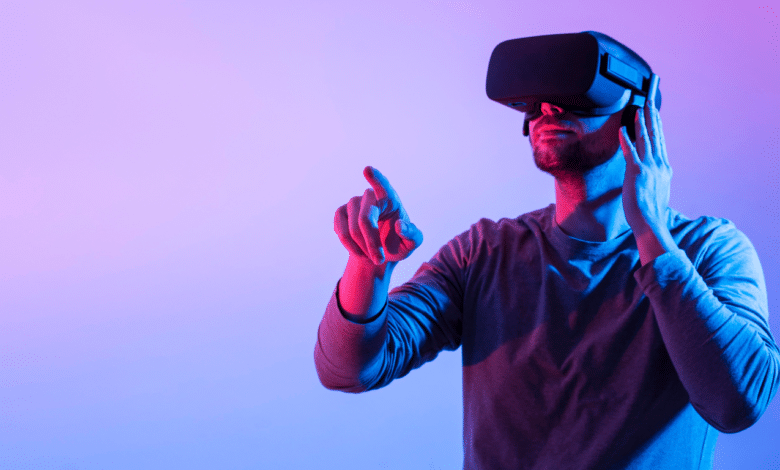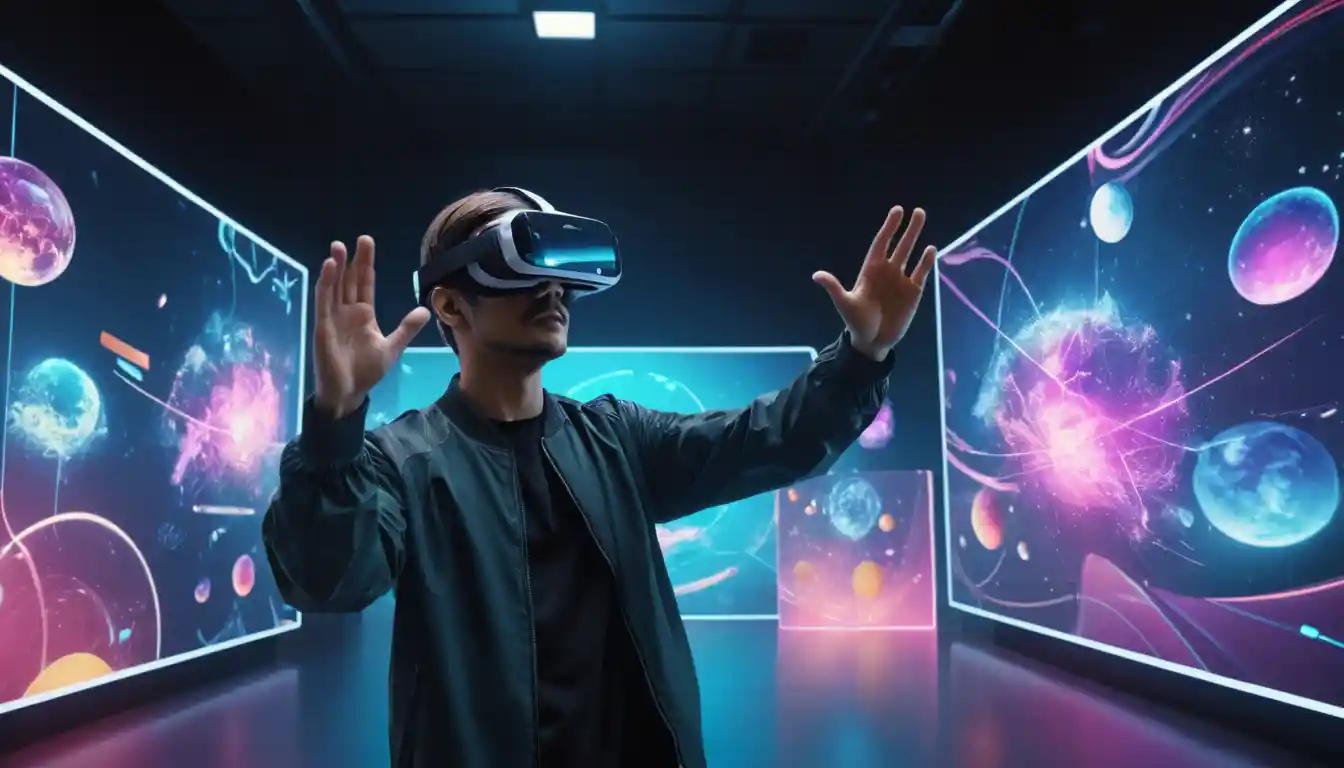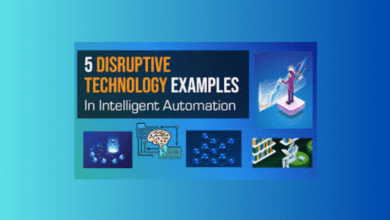What Is Immersive Technology: Key Concepts & Applications

Immersive technology is rapidly reshaping the way we interact with the digital world. Whether you’re experiencing a virtual reality (VR) game, using augmented reality (AR) for shopping, or even participating in a mixed reality (MR) experience, these technologies are transforming everyday life in ways that were once only imagined. But what is immersive technology, and how is it playing a crucial role in various sectors in India?
In this blog post, we’ll explore the concept of immersive technology, how it’s being applied across different industries, and why it’s especially impactful in India. By the end, you’ll have a clear understanding of how immersive technology is poised to shape the future, both globally and locally.
What Is Immersive Technology?
Immersive technology refers to digital experiences that fully engage the senses, creating a realistic, interactive, and often multi-dimensional environment. These experiences can be delivered through various mediums, such as virtual reality (VR), augmented reality (AR), and mixed reality (MR). In essence, immersive technology is designed to “immerse” users in an artificial world or enhance their physical world with digital information.
By blending the physical and digital worlds, immersive technology creates a sense of presence—where users feel as though they are part of the environment, whether they are interacting with it virtually or augmenting their real-world experience.
Types of Immersive Technologies
Immersive technology encompasses several distinct yet interconnected technologies. Here’s a breakdown of the most prominent types:
Virtual Reality (VR)
VR immerses users in a completely digital world. With the help of a VR headset, users are cut off from the physical world. Surrounded by a computer-generated environment. This is commonly used in gaming, simulations, and education.
Example: A VR game where players explore an alien planet or a medical training simulation where doctors practice complex surgeries.
Augmented Reality (AR)
AR overlays digital content onto the real world, enhancing the user’s perception of their environment. Unlike VR, AR doesn’t isolate users from the physical world, making it more interactive in daily life.
Example: In India, AR is being used by retail stores like IKEA to let customers visualize how furniture will look in their homes before purchasing.
Mixed Reality (MR)
MR blends both VR and AR elements, enabling users to interact with real and virtual elements simultaneously. MR environments are often more complex, allowing for dynamic interactions with the digital content.

Example: MR is used in the automotive industry, where engineers use it to visualize a car’s design and interact with virtual models while in a real workshop.
Why Is Immersive Technology Important for India?
India is a country with a large and diverse population, a rapidly growing digital ecosystem, and a rising demand for technology that enhances everyday life. Immersive technology has the potential to transform many sectors in India, creating new opportunities and addressing long-standing challenges.
Education
In India, the education sector has faced significant challenges such as overcrowded classrooms, outdated teaching methods, and a lack of engagement. Immersive technology can address these issues by providing interactive and immersive learning experiences. VR and AR-based tools allow students to explore complex topics in subjects like history, science, and geography in ways that textbooks simply cannot match.
Example: Imagine a student learning about ancient Egypt through a VR experience, walking through pyramids and learning about the civilization firsthand.
Healthcare
India’s healthcare industry is growing rapidly, but it still faces challenges such as limited access to quality healthcare in rural areas and a shortage of skilled medical professionals. Immersive technology can revolutionize the medical field by providing remote consultations, virtual surgeries, and training simulations for doctors.
Example: AR can assist in surgeries by overlaying critical information on a surgeon’s field of vision, enhancing precision and reducing errors.
Retail and E-Commerce
The e-commerce sector in India is booming, and immersive technology is helping companies offer better online shopping experiences. With AR, customers can virtually try on clothes, see how furniture fits into their homes, or visualize how products will look before making a purchase.
Example: A user can use their smartphone to view how a pair of shoes would look on their feet, helping them make more informed buying decisions.
Entertainment
The entertainment industry is one of the primary beneficiaries of immersive technology. From VR gaming to interactive movie experiences, immersive tech is revolutionizing how people consume entertainment. India, with its growing gaming community and vibrant film industry, is embracing immersive experiences.
Example: VR arcades are becoming popular, where players can fully immerse themselves in gaming environments, or even experience Bollywood films in virtual theaters.
Tourism
India’s tourism industry, which attracts millions of domestic and international visitors each year, is also tapping into immersive technology. Through virtual tours, travelers can explore destinations remotely, getting a taste of places before making a physical trip.
Example: Virtual tours of heritage sites like the Taj Mahal allow users to explore these locations from the comfort of their homes, making travel decisions easier.
The Challenges of Immersive Technology in India
While immersive technology holds tremendous potential, there are some challenges that need to be addressed, especially in India. These include:
High Costs
Immersive technology requires specialized equipment such as VR headsets, AR glasses, and high-performance computers. This can be expensive, particularly in developing regions where access to such technologies is limited.
Infrastructure Limitations
In many parts of India, there is a lack of reliable internet connectivity and electricity, which are crucial for immersive experiences. The widespread adoption of immersive technology will depend on improvements in infrastructure.
Awareness and Adoption
Despite the rapid growth of technology in India, there remains a knowledge gap regarding immersive technology. To fully realize its potential, greater awareness and training programs will be needed for both consumers and businesses.
Privacy and Security Concerns
As with any technology that collects personal data, immersive technologies come with privacy and security risks. Protecting user data and ensuring secure experiences will be critical for widespread adoption.

The Future of Immersive Technology in India
Despite the challenges, the future of immersive technology in India looks promising. With advancements in AI, 5G networks, and more affordable hardware, the barriers to entry for immersive experiences are steadily being reduced. As technology becomes more accessible, industries like education, healthcare, retail, and entertainment are expected to see even greater transformation.
The Indian government has also taken steps to foster innovation in immersive technologies. Initiatives like Digital India and Skill India aim to boost digital literacy and create a favorable ecosystem for technology startups, including those in the immersive tech space.
Frequently Asked Questions
What Is Immersive Technology and How Does It Work?
Immersive technology refers to digital tools that create engaging experiences. These tools immerse users in a virtual or enhanced environment. Examples include virtual reality (VR), augmented reality (AR), and mixed reality (MR). They enable users to interact with and explore digital content in a lifelike way. This goes beyond traditional screens.
How Is Immersive Technology Used in India?
In India, immersive technology is transforming several industries. For example, in education, VR and AR enhance learning. Students can explore historical sites or engage in interactive science lessons. Retailers use AR for virtual try-ons. The gaming industry embraces VR for immersive experiences. In healthcare, AR assists doctors during surgeries.
What Are the Benefits of Immersive Technology?
Immersive technology brings many benefits. It creates engaging learning experiences and improves customer interactions. It also enables realistic training simulations. Users can access remote experiences, like virtual tours of distant locations. Additionally, it helps improve product demonstrations. In healthcare, it enhances precision during procedures and provides safer training environments.
What Challenges Does India Face in Adopting Immersive Technology?
Despite the benefits, India faces challenges in adopting immersive technology. High costs for specialized equipment are one barrier. Additionally, infrastructure issues like inconsistent internet connectivity limit access. There is also a lack of awareness about how immersive technology can be used. Furthermore, privacy concerns and data security issues are rising as more personal information is collected through these platforms.
What Does the Future Hold for Immersive Technology in India?
The future of immersive technology in India looks bright. Advances in 5G connectivity, affordable hardware, and artificial intelligence will make these tools more accessible. Government initiatives, like Digital India, are helping increase adoption. Sectors such as education, healthcare, and manufacturing will benefit. As more businesses and consumers embrace immersive experiences, India will become a key player in the global immersive technology landscape.
Conclusion
Immersive technology is a paradigm shift in how we interact with digital content. It is not just a trend but a powerful tool that can transform industries. In India, immersive technology is already improving education, healthcare, and entertainment. As the country continues investing in digital infrastructure, immersive technology will play a central role in shaping the future. Whether you are curious about new forms of entertainment or looking to enhance customer experiences, now is the time to explore the possibilities.





